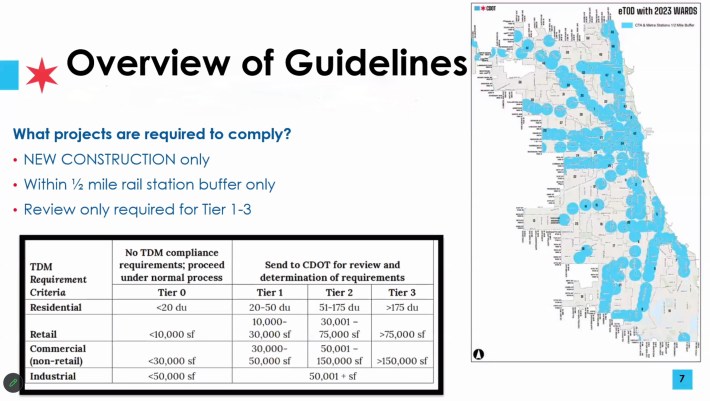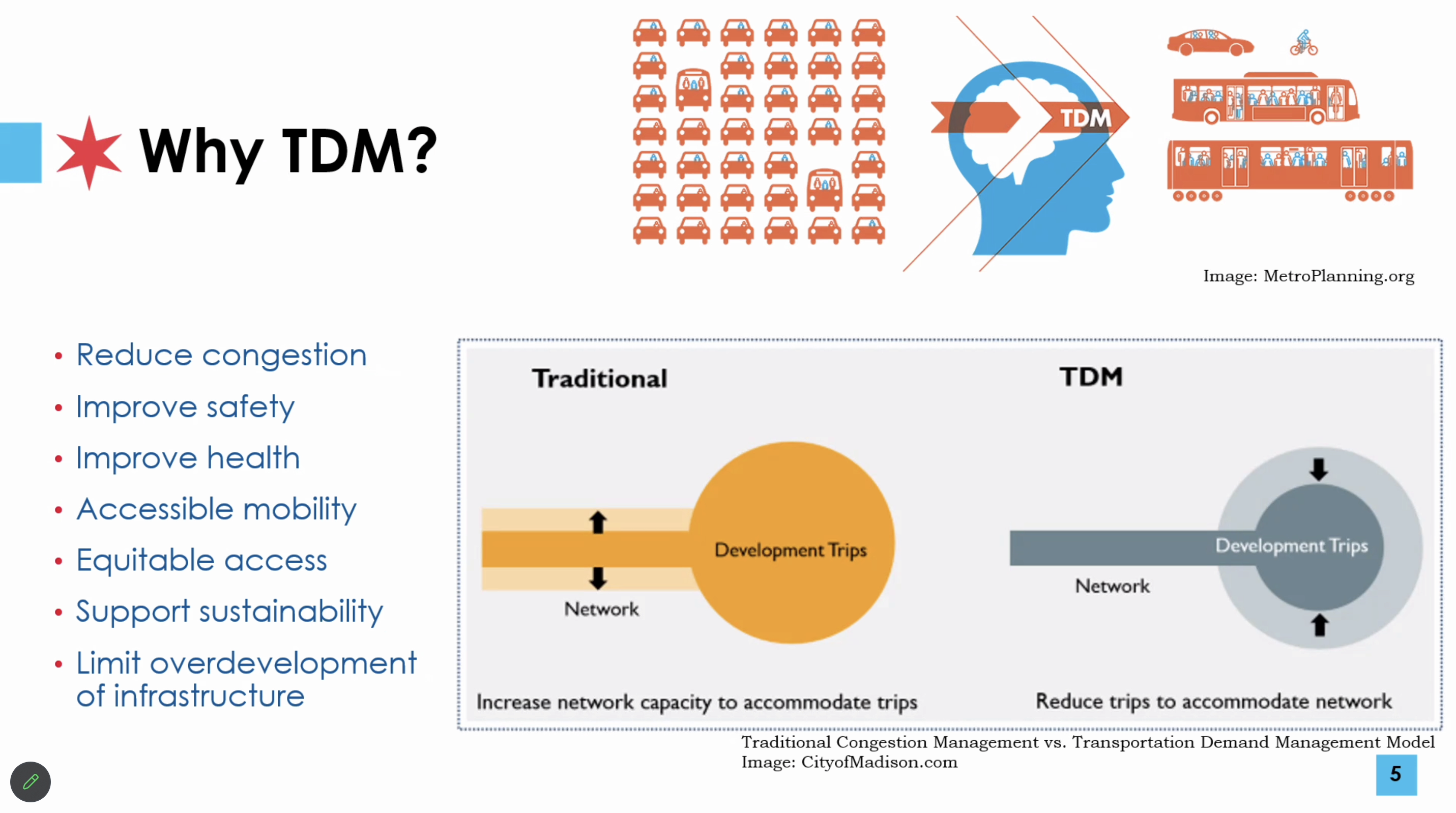On Tuesday, the Chicago Department of Transportation hosted a webinar providing an overview and guidelines for compliance with Travel Demand Study and Management Plan (TDM) requirements. Those guidelines are required for new construction project owners in B, C, and D zoning districts near train stations to meet Connected Communities Ordinance requirements. The webinar was hosted by Bill Higgins, the CDOT project manager in charge of the Public Ways policy group, which is part of the project development division at CDOT.
The webinar, which lasted about an hour, started with a bit of background. The Connected Communities Ordinance is also called the Equitable Transit-Oriented Development Ordinance. That legislation is intended to ensure that everyone, regardless of income, race, ethnicity, age, gender, immigration status, or ability, has access to "the benefits of dense, mixed-use, pedestrian-oriented development near transit hubs." The ordinance passed last summer after two years of discussion with various stakeholders.
"It expanded beyond the radius of the transit stations shown here to several priority bus lines as well, a quarter mile to bus lines, and then the train station radius was increased to half a mile," Higgins said.
"The ETOD and connected communities ordinance allows for reductions in [car parking requirements] and a variety of other zoning and housing implications for development in those areas. Today, we're really only talking about two small requirements that show up in the code, which are these two sections, 17-3-308, and 4-301."

Those sections state that construction projects in B, C, or D zoning districts within half a mile of rail stations must follow CDOT's Transportation Demand Management rules. The ordinance does not affect how trips are made to and from traffic generators in areas not served by rail transit.
These are strategies and policies designed to reduce the number of single occupancy vehicle trips – which clog the streets and the air – and promote sustainable transportation like walking, biking, or public transportation.
Currently, CDOT has implemented guidelines that will serve as the precursor to the above-mentioned rules. According to Higgins, the department hopes to finalize the rules by spring of 2024.
"So why is TDM important to transit-oriented development?" Higgins asked. "It really goes hand in hand with a lot of things that are built within the mindset of transit-oriented development where we're reducing parking and providing amenities that emphasize all these alternate modes of transportation...However, we just wanna make sure that...some of these strategies are extended to really make sure those things happen, that there's a clear path from a development to a transit site."

Higgins noted that they've set up a website for the CDOT Plan Review committee that reviews projects with CDOT requirements. There you can peruse the presentation that was held during the webinar, an FAQ, and an overview of the guidelines:
- Requirements for smaller projects are waived
- Tiers are loosely structured to adapt to projects by bulk & density
- Most projects will only require a memo outlining basic strategies
- Larger and more impactful projects will require a study and management plan for implementing advanced strategies
- An annual survey will be conducted by CDOT
- Guidelines are flexible, case by case review, in order to consider how to implement the final rules
Some TDM strategies being considered for improving new developments are bike parking quality and amenities for bike owners in office and apartment buildings, bike share availability, well-lit routes to public transit, and good conditions for walking and biking. To help make these strategies successful, there could also be "welcome kits" for residents, transit screens, notice of programming, communication services, and data collection and analysis.
Another idea is carpool programs within office buildings with designated parking spaces and on-site carpool to reduce the number of trips parents and caregivers make before going to work. Buildings could also offer incentives to use non-car transportation such as subsidized or bundled fares, a last mile/ride home guarantee, and flexible business operations such as work from home. Higgins added that the bundled fares could be part of a building's amenities or rent.
"So another big question we get is how much is enough?" Higgins said. "The impact that a strategy may have may vary by project. We considered something like the [Sustainable Development Policy] that requires you to get a certain number of points. But we realized quickly that in terms of transportation impacts, there are different needs across the city and well-served areas, a particular strategy might be more impactful [in these areas than others.]"





